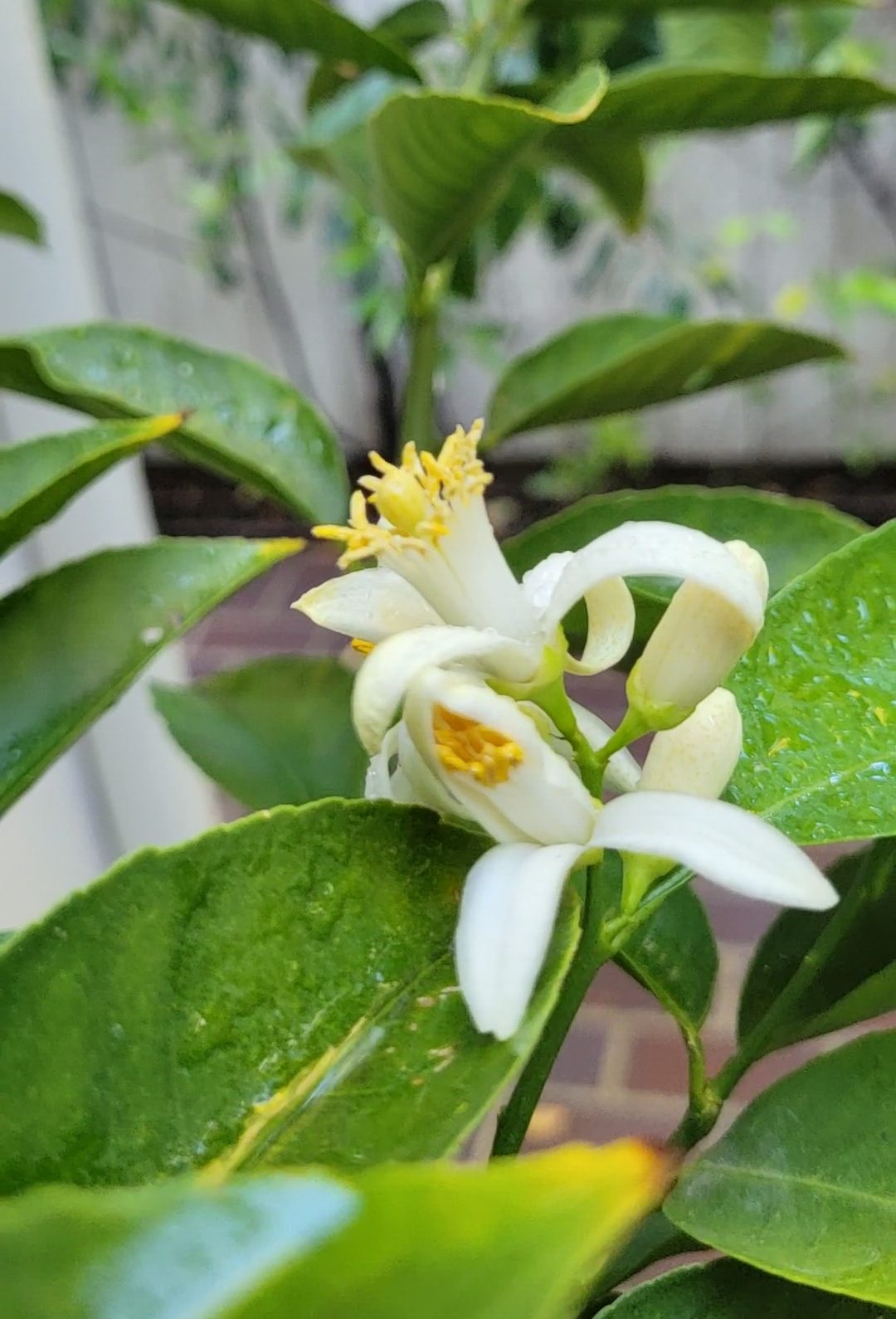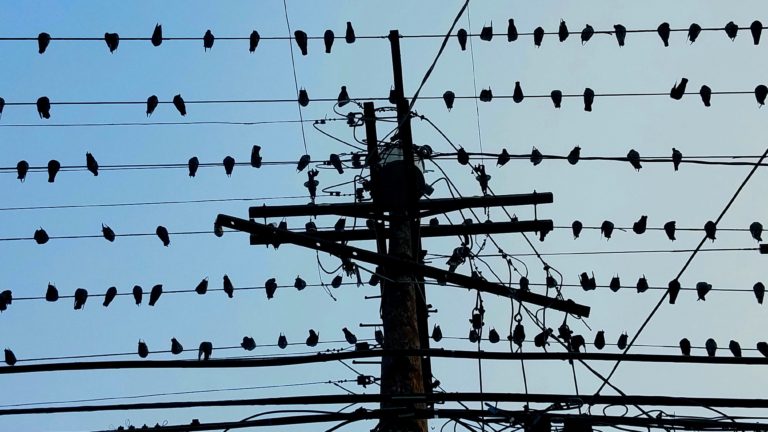Antoinette Carone – Fiction
An acorn fell at her feet. She was standing under a spread-out branch an oak tree. A live oak, still...

The Lady of the Green Scarf
Jon’s funeral took place on Halloween, the most beautiful October morning that year. Lucy was too numb to pay attention to the service. Her eyes filled with tears, but they never flowed freely, even when the pallbearers lowered the casket into the earth. One by one, mourners took a spade and placed a shovelful of soil on the coffin. Lucy stood rooted in the distance and let the scene flow over her.
The graveyard had displaced ancient woodland. Old-growth trees remained, scattered among the tombstones. The leaves had not yet fallen, but at the height of their beauty, were dying. They would reappear in time, or rather, others would take their place.
“Time has taken Jon away from me, but it will also take me away from him,” Lucy murmured to herself. She did not want to be taken away. She wanted to grieve forever.
The mourners drifted back to their cars, but Lucy would not leave the cemetery. She lingered after her friends hugged her and left, saying nothing because what they could possibly say that would be of any help?
“It’s time to go,” Anna said.
Lucy refused to move. She looked at the grave and at Jon’s coffin, scantily covered with earth. Anna gently took Lucy’s arm. They started walking away.
Lucy turned back for one last glimpse. Then she saw her: a tall, thin woman in a long black coat and scarf of pure emerald green. She moved from the shadow of a sarcophagus and approached Jon’s grave. The scarf was long, reaching the hem of her coat so that she nearly trod upon it as she stooped to pick up the handful of earth. The woman stood, held the scarf close to her body with her empty hand, while she extended the other in a gesture of reaching out to someone. She let the earth fall slowly through her fingers onto the coffin.
“Anna, look. Who is that woman?”
“It’s nothing, poverina. There’s no one there.”
“I saw a woman. She was dressed in black. She had a big green scarf wrapped around her neck and she threw dirt on Jon’s coffin after she thought everyone was gone.”
“Ah! Green is the color of healing. It’s time to go.”
Still Lucy did not move. She wanted to hold on to this moment — the interval before real mourning began. In the cemetery, in the cool sunshine and the warm colors of autumn, she could pretend desolation was not awaiting her. Jon was here. She held her breath, hoping to sense his presence.
“Lucy, we must go now. There is on one else here.”
As Anna attempted to cajole Lucy out of the cemetery, teenagers dressed as witches and sorcerers headed to a nearby oak tree. They formed a circle and began a chant. It struck Lucy that today was Halloween, the night the dead were allowed to return. Jon would surely be present. If she just stayed still long enough, she might see him. Someone touched her shoulder gently. Smiling, she turned. It was Anna.
***
Every day since the funeral, the cat Grimaldi had loitered about the studio as if he expected Jon to reappear. Every time Lucy passed the closed door, Grimaldi would rub her legs and run to the door where he stopped and meowed at her.
The day after Thanksgiving, Lucy decided to sort through Jon’s work. Now was as good a time as any. Things needed to be put in order. Not a simple task. She started by gathering blank canvases, sketch pads, paints, brushes, art books, pencils of every size and hue. These she packed into boxes and stacked them in a corner. On Monday she would drop them off at the Children’s Aid Society for after-school art classes.
Next Lucy turned to the paintings lined up along the wall. Some she would give to friends. Most she would take to the gallery to be sold. Jon had created a plethora of work, which recently had been going for a good price.
The fifth painting she picked up struck her. It was a nude, a woman. Not unusual. Jon often hired live models. This model was tall and thin. She was seated with her right leg extended while the left leg bent with the foot touching the right thigh. Arms lifted, hands folded behind her head, she reclined on pillows piled against an ochre wall. She seemed to gaze somewhere beyond the frame that contained her. The woman was rendered in warm tones. Her skin was alabaster with pinkish-beige shadowing. Her nipples and aureole were a dark sienna with a muted vermillion undertone. A tint that only Jon seemed able to formulate. All shades of brown, except for her Auburn hair which blended into cushions of rose-amber. All these warm tones lulled the viewer’s eye until it was pulled away by the emerald green drapery around the woman’s shoulders. A long scarf fell between her breasts and over her right thigh, only just concealing her vulva but not her pubic hair, which was a lush chestnut and prolific. The effect on Lucy was disturbing. Something in the painting was familiar.
Instinctively, she shoved the canvas away from her. She sensed danger in the image but couldn’t articulate its cause. Unsettled, she reacted to something in the painting that she had seen in the past. Something no longer remembered, even, but it lay in the recesses of her mind waiting to be recognized, waiting to do harm. The threat centered not on the nude herself but on the green scarf. It was uncanny—familiar but strange. Lucy remembered having seen it, but it was nowhere in Jon’s studio, not with other fabric and props he used with models or for still life.
“Green,” Lucy remembered Anna saying, “is the color of healing.” But this green looked like the color of poison, the drapery languidly spreading to engulf and suffocate.
“My imagination is on overdrive,” Lucy decided.
She picked up the painting to place it in the stack for the gallery, but instead stood it against the wall, facing backward.
On Sunday, Lucy went for a walk. The painting had disturbed her more than she wanted to acknowledge. She had been nervous and restless since finding it. Instead of staring out the window and allowing Grimaldi to make use of her lap, she sought the outdoors. She enjoyed walking. It relaxed her..
***
Lucy walked the short distance through the dead leaves on the sidewalks in front of the houses on her street and onto the larger avenue. This, in turn, gave onto a street as old as the town itself. It was ideal for walking. Lucy advanced without conscious aim in whatever direction fate took her. The old road ended abruptly at the graveyard so curiously placed in the middle of this splendid neighborhood.
Finding herself at the cemetery, Lucy decided to visit Jon. Perhaps seeing the earth that contained him would make her believe time was truly passing. She might not remain frozen in grief. She loved the life she and Jon had shared. She loved the colors that stained his hands, the smell of oil paint on his skin, and the way he gazed beyond everything when solving a problem with shading or line. She loved the way he beamed at gallery openings. All now and forever gone.
“I need to find a new mode of being,” she said aloud.
She wound her way through tombstones toward the oak and maple canopy that stood over Jon’s gravesite and searched for his grave. His headstone would not have been erected yet. There would be only a small white rectangular marker with his name. Lucy imagined she saw a figure move among the trees, and vaguely recalled an image of witches dancing around a sacred oak.
An acorn fell at her feet. She was standing under a spread-out branch an oak tree. A live oak, still bearing its leaves, although now brown and desiccated. The lawn too was sparse and dun colored. Then she saw it—the one point of color standing out in the monochrome of muddy earth and grey tombstones. Green.
An emerald scarf lay on the upturned soil of Jon’s grave. It was placed over the earth, like someone might cover a sleeping child. Lucy gasped. Her breath came cold and sharp, like the thrust of a knife. She picked up the scarf. It felt warm., as if laid there only a few minutes ago. It was made of fine wool but had no label. Perhaps it had been hand-knit, the stitches were so small and precise, soft and supple. The scarf was stunning.
Once home, she made directly for Jon’s studio. She laid the scarf on the edge of Jon’s easel. It draped in folds to the floor. It was the scarf in the painting!
Again, Lucy could not help but admit that the model was beautiful and her appearance the antithesis of her own. Now she pondered the idea that Jon had been deeply estranged from her. He did often say that if she lost just ten pounds, she would be perfect and often asked her to let her hair grow and maybe have it straightened. But Lucy liked her curly hair cut short for easy maintenance. She resented his imposing his artist’s aesthetic on her; after all, her body was hers to control, not his. The notion that her husband might have been attracted to a woman so opposite unnerved her. But then, it was only a picture. Still, it was so sensuously and lovingly rendered.
The figure in the painting propelled Lucy to her bedroom mirror. For the first time since… when? Lucy studied herself in a mirror. She encountered an average-looking woman where once she welcomed an exotic one. This woman was not short, but she certainly was not tall either. She appeared sturdy rather than delicate. That woman had once looked like a Botticelli boy, or so Jon had said. Dark brown hair, very curly, falling to her shoulders in ringlets. She hadn’t bothered with her hair over the past month, so now it was almost shoulder length again. In the soft, intimate light of their bedroom, her eyes seemed to be a plain light brown. But not always. They were perfectly capable of turning green in certain light. But green was not a color Lucy wanted to acknowledge.
Lucy called her office the next morning and told them she was taking a personal day. Over the course of the next hour, Lucy trailed upstairs and down with Grimaldi at her ankles, putting the paintings in the trunk of the car. The last was “The Lady of the Green Scarf”, as she now called it. This she placed face down on the back seat and drove to Jon’s gallery.
Georgina, the gallery owner, seemed happy to see her. “You’re so enterprising,” Georgina said while helping Lucy get the paintings from the trunk.
“Let’s put them here,” said Georgina, leading the way to the vast front room. Georgina lined the paintings against the wall where daylight came through from the long window. She scrutinized them, smiling.
“I didn’t expect you to bring these until after Christmas.” She looked at Lucy somewhat hesitantly. “Should we do Jon’s retrospective around mid-January, do you think?”
“Sure. If you think that’s a good time. There’s one more in the car. I’ll be right back with it.”
Georgina was contemplating how to arrange the paintings, making groupings and re-making them when Lucy came in with “The Lady.” She placed it by the window in the dim natural light of late November morning. Again, the brown tones pulled the eye to the green scarf.
“Wow!” exclaimed Georgina.
“Do you know who the model is?” asked Lucy.
“This may be Jon’s best work he’s ever done.”
“Who’s the model?”
Georgina continued to regard the painting. “Are you sure you don’t want to keep it? We could show it but mark it ‘not for sale’.
“Georgina,” Lucy said,” who is the model?”
Finally, Georgina managed to pull her gaze away from the green and the shadings of sepia and sienna to take notice of the woman in their midst.
“It’s Jasmine,” Georgina answered, “but she looks softer.” Then added, “I didn’t think she would be modeling along with everything else she does.”
“Who’s Jasmine?”
“She worked here part-time. She also taught art history part-time. At the university, not at the gallery.”
“When will she be in?”
“She won’t. She quit just before Thanksgiving. Kind of sudden, too. She said her mother was sick, and she needed to go take care of her. Original, right?”
“So why did she leave?”
“Maybe it was true.”
“Where did she go?”
“Back to Italy. She left last night.”
“How do you know?”
“She had to give up her apartment on the fifteenth, so she stayed with me through Thanksgiving. What’s odd is that she talked about going back home in January. After her classes were over. Then she left in the middle of the semester.”
“Were you good friends?:
“Everyone liked Jasmine. That’s not her real name, you know. She thought her actual name was strange, so she called herself Jasmine.”
“What is it? Her actual name?”
“Gelsomina. I guess she wanted to fit in, so she made up a contemporary name.”
“What was she like?”
“Smart. She loved art and was quite knowledgeable. Really passionate about it. And active about promoting our clients. I’m surprised Jon never told you about her.”
“Why should he have told me about her?”
“She was his rep.” After a pause, “What’s wrong?”
Lucy had suddenly gone white. It was like being stuck in the abdomen by a sword. A sharp jab hit her above her diaphragm. She inhaled long, exhaled and answered, “Nothing really. It’s just…”
A wave of comprehension lingered on Georgina’s face for a slow second, then, “Oh.”
“Was she having an affair with Jon?”
“I don’t know.”
“Thanks. See you soon.” Lucy walked out of the gallery.
Back in the car, Lucy put her head on the dashboard and tried not to cry in public. Who was this Gelsomina woman? Gelsomina was Italian for Jasmine. So, she had gone back to Italy? Lucy imagined something pushing her away from her life that had been so serene, so comfortable, and propelling her into something quite different. She had been content if not joyful in their marriage. She adored Jon. He dedicated himself to his painting. Her life at work and as an artist’s wife satisfied her.
“Success by proxy,” she thought.
When she got home, Lucy made herself a cup of tea and took it up to Jon’s studio. She had left the portrait of Jasmine at the gallery, but the green scarf was still on Jon’s easel. Lucy stared at it wondering who Jon had really been.
After Jon’s funeral, but before she suspected his affair with Jasmine, Lucy had found comfort in mourning. She would later look back on that brief span as, strangely, perhaps the most peaceful time in her life. She was able to miss Jon’s voice. She was able to call him back to her by going into his closet and inhaling. His smell still lingered. She could remember the touch of Jon’s hands, stiff from holding brushes. His straight light brown hair was often streaked with colors not found in nature. She even missed the cat hair on his clothes.
Once she learned about Jasmine, Lucy became obsessed with her. She also wondered who she herself had been. This led her to second guess her memories.
She did not recall having spent evenings alone, but then Jon could have been painting Jasmine in his studio while Lucy was at work. She imagined that Jon’s friends at the gallery knew about the affair.
Jon had never been unkind. Possibly a little distracted just before his illness, but this Lucy attributed to his focus on painting. Now she realized it was something else.
She tried to locate the point of change but could not. Something had developed in secret and over time, like the disease that killed him.
She was also ashamed; convinced that Jon’s infidelity had been her fault. Someone else gave him what she would not, could not. Someone else understood his work better, saw as Jon had seen. This woman knew how to drape herself in just the right way to capture the very image in Jon’s imagination to enable him to render it in precise line and color.
That painting with its delicate earth tones, with its perfect splash of bold green, was a masterpiece. The artist clearly adored his subject. The woman in the painting displayed the precise balance of coolness and passion. But this woman was not Lucy.
Her mourning would have to end sometime. She was dismayed that she could not now grieve properly. Had her friends known about this Jasmine, they would have said she should be angry. To Lucy, however, Jasmine had not only robbed her of her husband but to her right to the deep and healing grief of widowhood.



